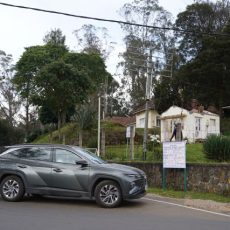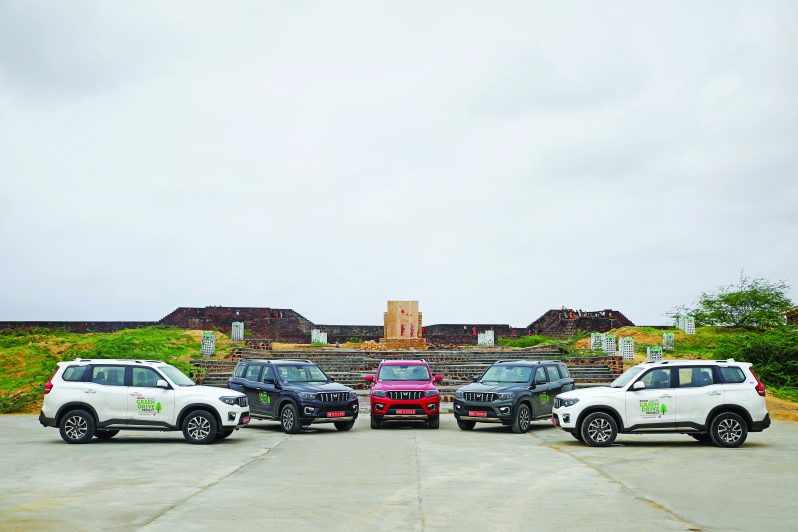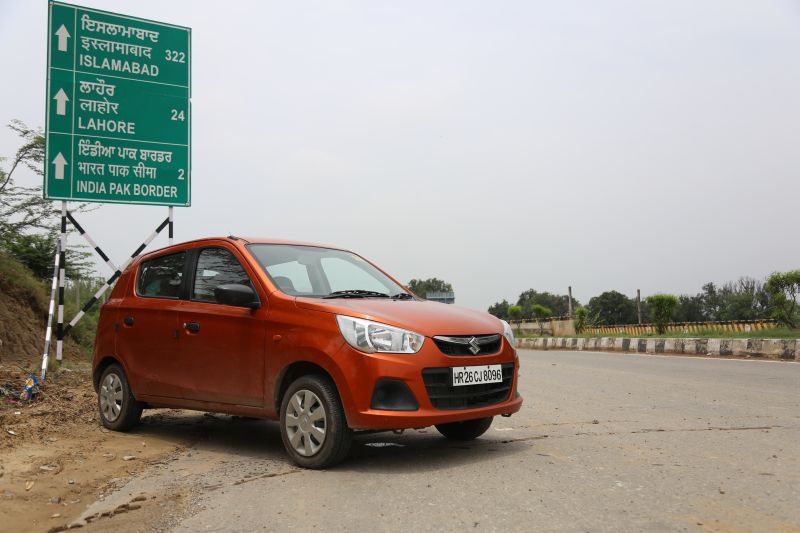
The Border2Border journey that we undertook started at the Indo-Pakistan border in Wagah, Punjab
Story: Aninda Sardar
Photography: Aditya Dhiwar
The border outpost at Wagah is a famous one. Tourists from around the world come here to witness the Exchange of Flag ceremony that is conducted each evening (at 6.30 pm in summers and at 5.30 pm in winters). The unique ceremony, replicated nowhere else in the world, is a show of silent aggression between the Indian Border Security Force (BSF) and the Pakistan Rangers: a symbol of the shared animosity of two neighbouring nations. Yet, ironically, if you had come to Wagah even in the early months of 1947 all you would have found is a historic road, the Grand Trunk Road, which runs from Chittagong (Bangladesh) through the nondescript village and on to the city of Lahore. It was only after Independence that Wagah came to denote an International Border separating the two new nations of India and Pakistan. Our journey starts at this very border outpost as we head eastwards on en epic travel that would see us drive right across the heart of the Northern Plains of India. Our goal, to finish at India’s other border, the river Isamoti (Ichhamati) that divides our country from Bangladesh.
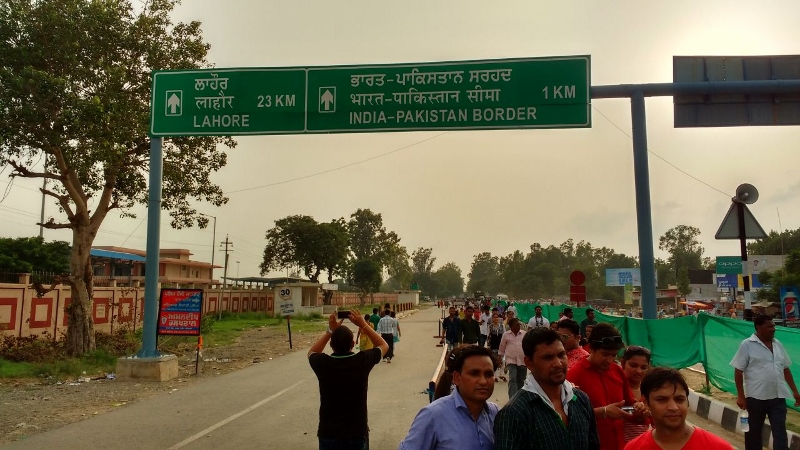
Back to present day Wagah. It’s about 5.45 pm and with three quarters of an hour still to go for the Exchange of Flag ceremony to start there’s barely any room at the stands that have been constructed on both sides of the border for the ordinary man to come and see this fantastic show. The ceremony starts to the sound of a bugle and from then on it’s hard to figure out how the time goes by. The stamping boots, the acrobatics of our jawans (currently, part of the ceremony is also conducted by women cadets of the BSF) matched by those in the olive drab pathani suits of the Pakistani Rangers on the other side of the massive gate adorned by an over-sized image of Quaid-e-Azam Muhammad Ali Jinnah. By the time dusk is giving way to an early twilight, we find ourselves walking back to the Maruti Suzuki Alto K10 that would be our trusted companion on this 2,300-plus kilometre journey. The one kilometre between the parking lot and the actual border gates feels endless in the stifling humidity of summer transitioning into monsoon.
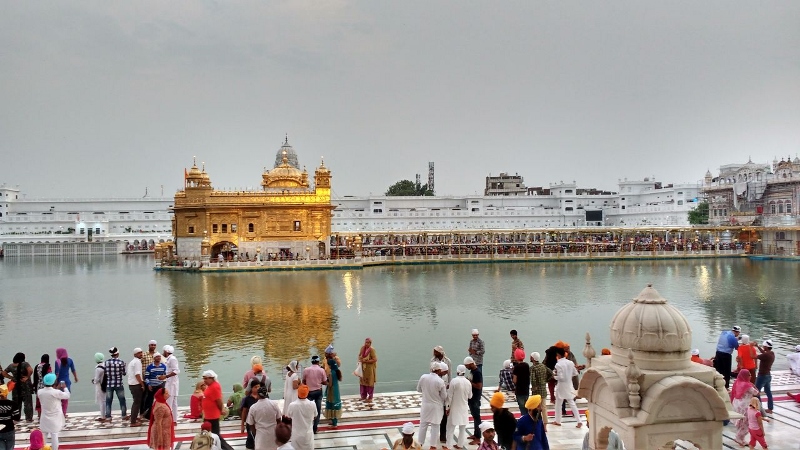
Our stop tonight is the city of Amritsar, which is just over 30 kilometres due east. The medieval city was founded by Guru Ram Dass, the fourth of the Sikh Gurus, in AD 1574. The foundations of the Golden Temple or Shree Harmandir Sahib, which has made the city immortal, was founded just three years later in AD 1577 with the commencement of digging of the Amrit Sarovar – the massive holy water tank that surrounds the temple itself. By the fading light of a patchy Indian sky Amritsar welcomed us with the hospitality of a long-lost family member. The sensation was further heightened on arrival at the Golden Temple for we – none of us Sikhs – were made to feel as welcome as our turbaned brethren.
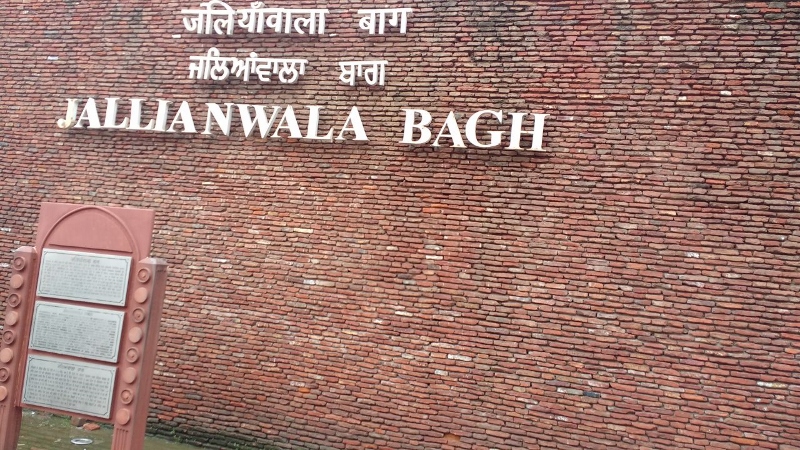
A stone’s throw away from the Golden Temple lies the hallowed grounds of Jallianwala Bagh. Back in 1919, on April 13 on the festive day of Baisakhi, Brigadier General R E H Dyer’s troops opened fire on a throng of people who were peacefully protesting against the Rowlatt Act of 1919. In his report to the government Dyer wrote that his troops had expended 1,650 rounds of ammunition in the gruesome exercise. The site, which had been washed with the blood of over a thousand unarmed Indians, is now a public park that houses a memorial. The memorial opens at six in the morning everyday and is a popular site for both tourists and the people of Amritsar.
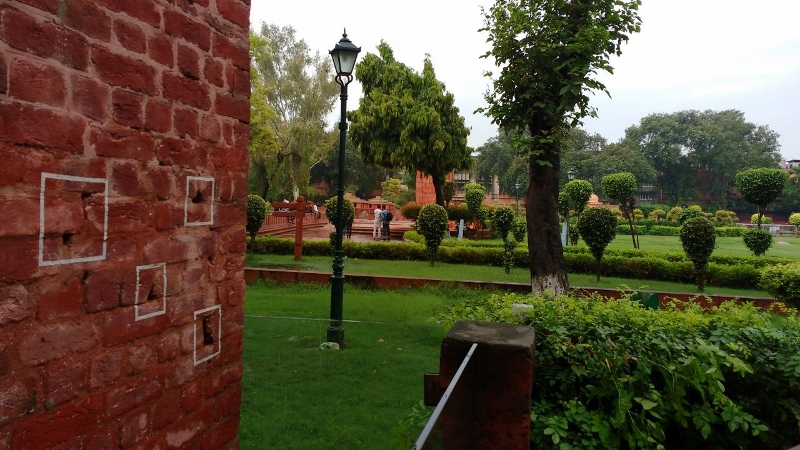
Dinner in the city reveals that Amritsar is quite the foodie’s delight. Bharawan da Dhaba, which is located near Town Hall, will be more than happy to satiate you with its mouth-watering sarson da saag (spinach cooked with mustard) and makki di roti (corn bread). As night fell and the beds beckoned it all seemed a bit fantastic for we had seen the aftermath of the Partition that has forever tarnished our celebration of Independence, the serenity of the Golden Temple’s spiritual sanctity and the consequences of peaceful protests during the days of the British Raj. All in the course of a single day.
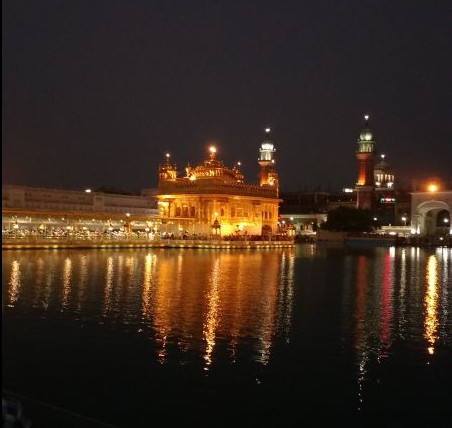
In our next part we head to Delhi, more than 450-km further east.


